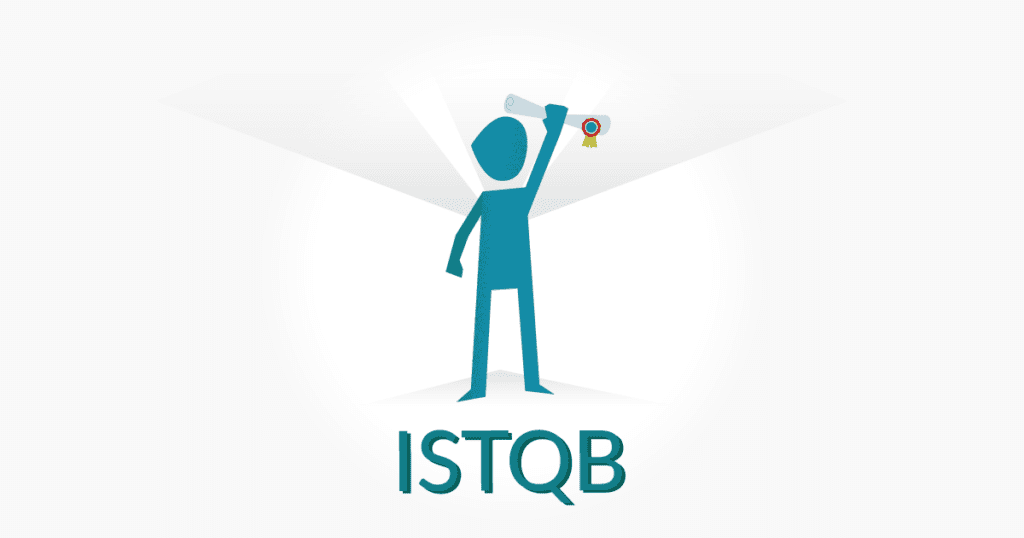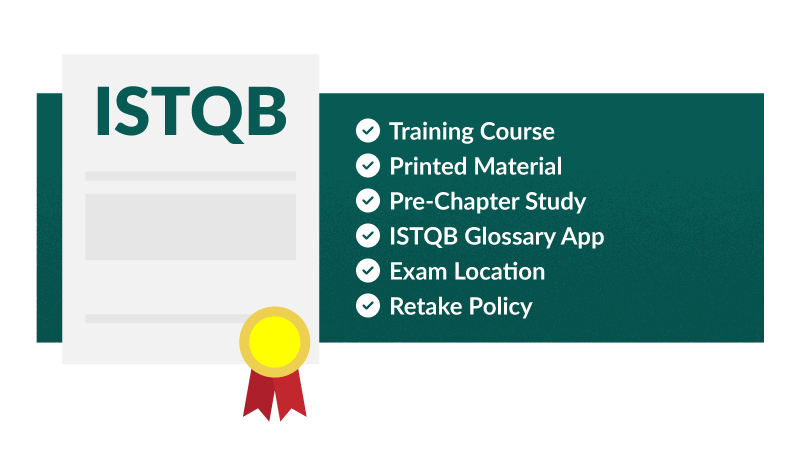The International Software Testing Qualifications Board (ISTQB) is a globally recognized authority in software testing. To become ISTQB certified, individuals must study for and pass an examination. The exam is intentionally challenging because passing is how you prove your knowledge of the material. This article discusses several tips to help you pass with confidence.

ISTQB Website Documents
The first step towards passing the exam is to become familiar with the ISTQB website. The site contains a lot of information that, at first glance, can seem overwhelming. Each exam has its own dedicated page that includes information on the certification and downloadable resources. Let’s discuss the most important documents found on the website.
Exam Structure and Rules
Before looking at the study material, reviewing the Exam Structure and Rules document can be an excellent place to start as you plan to pass the ISTQB exam. The document gives insight into how the exam is set up and scored, which can help you to know where to focus your study efforts. Topics include:
- Exam Rules – All exam questions will come from material within the syllabus. Although other books or courses may be helpful and educational, they are not required to pass the examination. The rules explain that all learning objectives and key terms are examinable.
- Exam Structure – The exam has 40 multiple-choice questions based on each chapter’s learning objectives. Specific learning objectives have mandatory questions, while others may or may not be included in the exam.
- Point Values and Scoring – Each question is worth one point in the exam, making a total of 40 available points. A score of 65% or higher is required to pass the ISTQB examination. This means a sitter must get at least 26 correct questions to pass the exam.
Syllabus
The most important document on the website is the syllabus because it contains all the testable material. The syllabus is divided into the Introduction, Chapters, and Appendices.
- K Levels – The Cognitive Levels of Knowledge, known as K Levels, define students’ comprehension of the subject material. You’ll find a brief mention in the Introduction, but Appendix B has a deeper explanation. The ISTQB Foundation Level considers three K levels; K1 – ‘remember,’ K2 – ‘understand,’ and K3 – ‘apply.’ (Advanced level exams do not contain K1 level learning objectives.)
- K1: Learning objectives at this level should be able to identify, recall, know, or retrieve the information.
- K2: This level requires the sitter to be capable of selecting answers based on understanding or inferring information and being able to give examples of different concepts.
- K3: This is the highest level where a tester should be able to apply their knowledge to different scenarios.
- Learning Objectives – Each syllabus chapter begins with specific learning objectives, which should be the focus of your studies. Each exam question will address at least one learning objective.
- Key Terms – The relative keywords are listed at the beginning of each chapter and are considered testable on a K1 level for the Foundation or Specialist exams. The ISTQB has a searchable glossary on its website with definitions of keywords, information about the syllabus, and the section each keyword applies to.
Exam Structure Table
Another essential document is the Exam Structure Table. This document provides information about the learning objectives for each section of the syllabus, such as the K level and the number of questions possible for a topic. It also explains:
- Exam Timing – The tester is required to complete the exam in 60 minutes, based on the assumption that a K1 level question will take 1 minute to read and answer, K2 will take 1 – 2 minutes, and K3 will take 3 minutes.
- Number of Questions per K Level – One chart in the document shows that there will be at least eight questions from K1 learning objectives, 24 from K2 learning objectives, and eight from K3 learning objectives.
- Questions per Section – One more chart on this document breaks down each chapter by sections, its K Level learning objectives, and the number of questions possible per section. Again, this is vital information for planning where to focus your study efforts.
Practice Exams
Practice exams allow the tester to evaluate their ability to pass the exam based on their current knowledge. Currently, the ISTQB website has three practice exams with answers for the Foundation Level. These can give you an advantage because, depending on your experience, you could take one exam before studying, take another halfway through, then take the final one after you have finished.
Training Course Information
While not mandated, many people benefit from a training course. These courses are typically led by an instructor who goes through the syllabus chapter by chapter, giving examples and deeper explanations. The courses can be online or in-person. There are three standard options if one chooses to take a training course to help them study the material.
- ISTQB Accredited Training Provider – The ISTQB website has a section listing Accredited Training Providers. These experts have passed an extensive application process to prove their knowledge and teaching ability. The courses are typically 4–5 days of 8-hour training and cost around $2,000. Some but not all of the providers include an exam voucher with the fee.
- Online Learning Marketplace – An increasingly popular option is to take a training course from online learning marketplaces such as Udemy and Pluralsight. These courses are far less expensive than accredited ones, typically under $100. The instructors are unvetted, but you can view the course outline and sample videos before purchasing.
- Company or Group Course – Some companies that want their employees to obtain certification will pay an authorized trainer to come on-site and teach the course, followed by an exam.
Tips to Pass the ISTQB Examination
When preparing to pass an ISTQB exam, there are some extra things you can do that can help give you an advantage.

Training Course
As mentioned above, training courses can be beneficial, but they can also be time-consuming and expensive. On the other hand, some people can read the material, take an exam, and pass easily. If you have that talent, you may not need to pay for a course. Decide for yourself if a training course is a right decision before purchasing.
Printed Material
If you are the type of person who likes a hard copy where you can highlight text or make notes, consider downloading the syllabus and then printing it into a booklet. When registering for an accredited course, you can sometimes include printed material for a fee.
Pre-Chapter Study
Before diving into a chapter, review the keywords and learning objectives. Doing this will help the content make more sense while also supporting concentration because you won’t have to pause and look up definitions in the middle of a section. Reviewing learning objectives beforehand helps you know what to look out for in each chapter as you study.
ISTQB Glossary App
Keep the official ISTQB Glossary App close to hand so you can look up definitions the moment you need them. The official app, designed to work across platforms and devices, is available via the ISTQB website.
Exam Location
Testers can take the exam in an official testing center or online with a proctor. Consider both locations before making a decision. You will not have to worry about phone calls, doorbells, or internet issues in a testing center. At home, however, you may be more comfortable and feel less stress in your environment.
Retake Policy
If you don’t pass your ISTQB exam, it’s a harsh reality. However, if this happens, you can retake it after paying the exam fee again. When you purchase a course through an accredited provider, they sometimes offer to cover the exam fee if you do not pass.
Conclusion
The decision to become ISTQB certified is a great way to develop your software testing skills and show that you are committed to personal development. The exam can be challenging to pass. However, plenty of resources are available depending on your available time and financial situation.
About the writer
Faith Quinn
Faith Quinn is a Lead QA Engineer with more than a decade of QA experience, including PCI and SOX.
All Faith Quinn's articles
